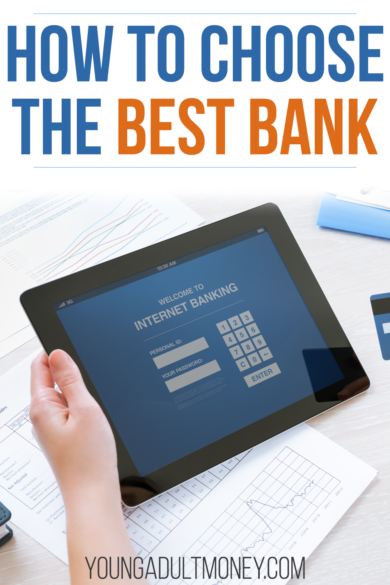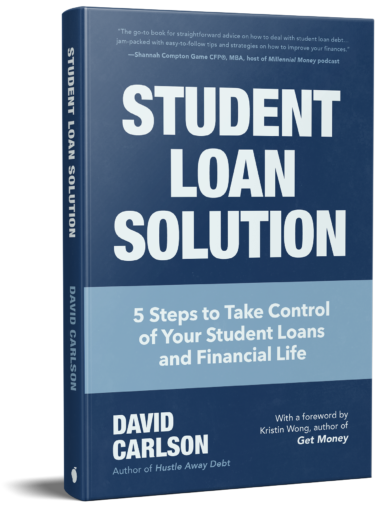 I’m cynical when it comes to banks.
I’m cynical when it comes to banks.
After all, the actual product a bank offers is not unique. It’s a highly regulated product, too, and virtually every bank is FDIC insured up to $250k, meaning even if the bank goes belly-up you will be able to recover up to $250k.
There are some ways a bank can differentiate itself. If they offers savings accounts they can compete on the interest rate they pay you on deposits. Customer service, fees (or the lack thereof), access to ATMs, and physical locations are all ways that banks can potentially differentiate themselves from other banks.
At the end of the day, there isn’t much there.
Despite all that, banks make billions of dollars in earnings. Part of these earnings come off the backs of people who have money deposited in checking and savings accounts, since they are able to lend the money at a higher interest rate.
Because banks make a ton of money, have a product that isn’t unique, and compete with hundreds of other banks and credit unions means you should expect only the best from your bank. If you aren’t getting the best, you should leave.
Let’s start by going deeper into what should influence your decision-making process when you are attempting to choose the best bank.
What Makes a Bank Good or Bad
I already rattled off some of the ways banks can differentiate themselves. Let’s unpack each one, briefly, to give you a better sense of what makes a bank a good or bad option.
- Interest Rate – From my perspective, other than ensuring that a bank is FDIC insured, interest rate is by far the most important aspect of whether a bank is better or worse. Interest rate is the amount of money a bank pays you in return for keeping cash at their bank. They can turn around and lend this money to customers, making a profit on the difference between the interest they pay to depositors and what they lend it out at (and most make huge profits).
I will elaborate on the situation shortly, but by keeping my savings account at a bank that paid me almost nothing in interest and one that paid more than 2.00% APY (Annual Percentage Yield) I was missing out on over $500 a year on interest(!) It should be no surprise why I value interest rate so much when comparing banks.
- Fees – With the number of banks and credit unions out there, fees should be minimal. Fees can include monthly maintenance fees just to have a checking or savings account open, ATM fees, and a variety of other fees. Ultimately you should never go with a bank that charges you a fee just to have an account open, and you should have access to a network of ATMs where you can withdraw cash without paying a transaction fee.
- Convenience – Many of the banks that offer the highest interest rates have few, if any, physical locations. They are able to offer a higher interest rate because of their lack of locations and the costs involved with running and maintaining those brick-and-mortar storefronts.
With that being said, I do have a workaround of opening a checking account at a convenient bank that has physical locations and a savings account with a bank offering a high interest rate. I go further into this strategy in the next section of this post.
- Customer Service – Customer service can be difficult to judge. There are some businesses with reputations of poor customer service (such as Comcast constantly increasing prices on their existing customers) and those, such as T-Mobile, that stand out for having exceptional customer service. Unless a company falls on one of these two extremes there isn’t that much difference between them, and this definitely holds true for banks.
- Company Culture and Reputation – Many consumers, myself included, are looking beyond the base offering of a business and factoring in the company’s reputation and culture. There’s a reason why people love Tom’s Shoes: a consumer truly is making a difference with each purchase.
Comparing a bank’s culture and reputation could make a difference when you have two options that are otherwise comparable. One example of this would be Wells Fargo. While they have spent millions on marketing their new image, they still have a big black mark from their recent scandal involving the opening of accounts without customer’s permission to hit sales metrics. Another example would be the massive data breach at Capital One that affected over 100 million consumers.
With all these factors in mind, I want to elaborate on my strategy of having accounts at two banks instead of one, which I think offers the best of both worlds.
My Approach: Choose TWO Banks
When choosing a bank, typically there are trade-offs between convenience and interest rate. A bank that has a lot of brick-and-mortar stores is naturally not going to offer the highest interest rate. Conversely, the banks offering the highest interest rate are going to be a little less convenient, namely in not having as many, if any, storefronts.
But there is a way to get the best of both worlds. You can do this by opening a checking account at a convenient bank and a savings account at an online bank offering a high interest rate.
I’ve used TCF for banking purposes my entire life. They are a regional bank that has many storefronts and fee-free ATMs where I live.
The only bad thing about TCF is they were giving me 0.01% interest rate on my savings account. After you factor inflation in, I was essentially losing money.
So what I did was keep my checking account at TCF and opened a savings account at CIT Bank, which at the time of this writing offers 0.55% APY.
0.01% versus 0.55%. No-brainer.
While it can take a couple days for transfers to move between TCF and CIT Bank, in general your savings account should be for emergencies, and therefore transfer out of it should be minimal.
My suggestion is to look for a convenient bank for your checking account, validating that it has no monthly maintenance fees and has access to a network of fee-free ATMs. Then open a savings account at a bank like CIT Bank that offers a high interest rate on your deposits.

